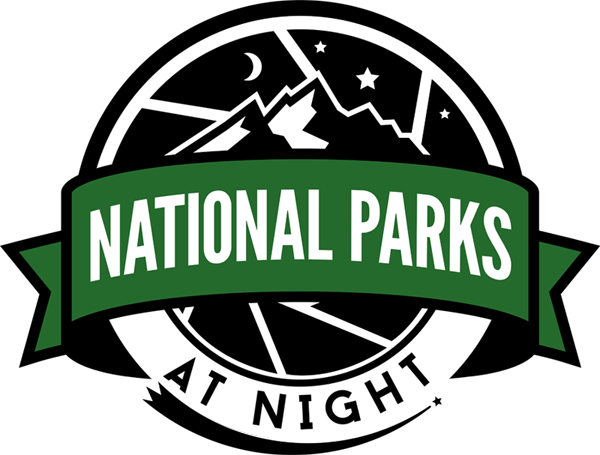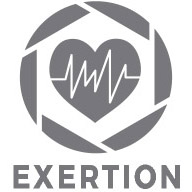Mesa Verde & Canyon de Chelly
Mesa Verde is high and dry. Canyon de Chelly is deeper and has a lush, verdant canyon floor at a lower elevation. Yet they share similar fascinating histories and archaeology. Explore how the improbable and abandoned ancestral Puebloan cliffside dwellings of Colorado and the Diné of Arizona look under a dark sky and a brilliant fall Milky Way.
Workshop Details
October 5-10, 2026 — Sold Out, Join Waitlist Below
This is a 6-night, 6-day workshop. Your adventure begins on the morning of October 5, and ends after a final shoot on the night of October 10.
$2,895 + applicable taxes.
Skill level
Intermediate and above. Participants should have a firm grasp of the basic principles of photography and of their cameras, and have a comfortable understanding of night photography fundamentals.
Group size
14, with 2 instructors — 7:1 ratio
NPS website
Mesa Verde National Park · Canyon de Chelly National Monument
Workshop Leaders
Registration
Hoping to get a spot? Sign up below for our no-fee waitlist.
| • Deposit of $800 is required to reserve your spot. |
| • Balance of $2,095 is due on July 7, 2026. → Pay balance here. |
| • You may choose the “Pay in Full” ticket if you desire to pay all at once. |
| • Last day for a cancellation request is July 6, 2026. (see cancellation and refund policy) |
| • The workshop fee does not include lodging, food, airfare, entrance fees, or transportation to or during the workshop. |
The Mesa Verde and Canyon de Chelly Experience
This workshop will explore two very different National Park Service units in one workshop, both featuring ancient cliffside dwellings. We begin our journey atop Mesa Verde National Park in Colorado and complete it above and within Canyon de Chelly National Monument.
Under the wide skies of southwestern Colorado we will watch twilight depart and the stars emerge above deep, deep canyons. The cuesta ranges from 6,012 to 8,571 feet of elevation. We will remain on the clifftops, except when attending tours of the cliffside dwellings during the daytime.
At night, we will marvel as the ancient Puebloans did at the stars sparkling above us in the arid, dark skies. We will shoot for the edit, making both twilight and starlight blends of the canyons and the cosmos.
After three nights on the mesas, we will drive 3 hours to Canyon de Chelly in Arizona and a lower elevation (5,000 to 6,000 feet). Our daytimes will comprise some classroom time and some jeep tours into the canyon to see the petroglyphs and dwellings from a closer position. (Note: Entry into the cliff dwellings is not allowed.)
Canyon de Chelly has rich, fertile earth on the canyon floor. Diné (Navajo) continue to live in and along the canyon, and we will visit their home as we explore the rim and the interior. We will spend at least one night on the canyon floor in 4-wheel drive jeeps, with the hope that we can make it all the way out to Spider Rock to photograph an epic panorama within the arch of the Milky Way.
What You Should Know
This workshop caters to knowledgeable photographers with an intermediate or higher skill set. Participants should have a firm grasp of the basic principles of photography and of their cameras, and have a comfortable understanding of night photography fundamentals.
If you would like to join us on this trip but are unsure whether you have adequate night photography skills, we can offer pre-event tutoring to get you ready for your adventure with us. Additionally, a few of us have written books that may be productive pre-trip reads.
What You Will Learn
We hope to push you to step outside your comfort zone—to test the limits of what you and your camera can do.
TOPICS COVERED WILL INCLUDE:
star trails
twilight and starlight blends
Milky Way photography
Milky Way panoramas
and more …
Night Conditions
Logistics & General Info
Travel
Our first base will be at the Far View Lodge inside Mesa Verde National Park. Our second base will be in Chinle, Arizona, just outside of Canyon de Chelly National Monument.
Strategically, you may consider flying into Cortez or Durango and out of Albuquerque or Phoenix, as they are closer to the start and end points of the workshop, respectively. Also, flying to Denver and taking the Denver Air Connection to Cortez or Durango is a way to save driving time.
You are responsible for arranging and paying for your own transportation.
Nearby Airports:
Cortez Municipal (CEZ) — 45 minutes from Mesa Verde National Park
Durango (DRO) — 1.5 hours
Albuquerque (ABQ) — 4.5 hours
Phoenix (PHX) — 7 hours
Rental Car
You will need a rental car to get to the workshop and to the shoot locations.
There is no need for four-wheel-drive.
If you are interested in carpooling or sharing a rental car, let us know and we will try to connect you with another attendee looking for the same.
Lodging & Food
Lodging for our two locations is a key way to enjoy the workshop. Since this is a “road trip” and we are changing hotels once, we ask you to consider using the room blocks we have chosen for the best experience.
You are responsible for arranging and paying for your own meals and accommodations.
Lodging
You are not required to stay at the official workshop lodging, though doing so does make it easier to meet with the group each day.
Info and group code will be sent once our lodging partner is ready to begin taking reservations.
If you are interested in sharing a room, let us know and we will try to connect you with someone like-minded in the group.
Food
Far View Lodge in Colorado has six food options, and the nearby town of Cortez has more.
Chinle has 10 food options.
We encourage eating two meals per day—a good breakfast and a great late lunch.
When on the night shoots, you may wish to bring snack food or a sandwich and plenty of water.
Weather
Expect daytime highs in the 60s F, and nighttime lows in the 30s.
Recommended Attire
Pants and long-sleeve shirts for daytime, pants, sweaters and cold-weather outerwear for night.
A base layer is highly prudent. Layers are good.
Comfortable and protective shoes are recommended for getting around. There won’t be long hikes, but we will be on trails, so quality trail shoes or hiking boots would be optimal.
Exertion Level
The exertion level of this workshop is Easy-Moderate. (See more about our classifications.)
No vigorous activity will be required during the workshop, but please consider your physical abilities prior to registering. There won’t be any long hikes, but we will be doing short hikes on unmaintained trails, and you should be comfortable carrying your own equipment over uneven ground in the dark.
If you choose to attend a daytime cliff dwelling tour at Mesa Verde, it has additional physical requirements that we will discuss in a pre-trip Zoom call.
The two parks range between 5,000 and 8,571 feet in elevation. Altitude sickness can become a concern at over 8,000 feet, and some people can experience it at elevations as low as 6,000. If you are generally sensitive to high elevations, or if you are coming from a sea-level region, we advise arriving in the area a day or two early to acclimate by going on some short hikes at altitude. We also advise staying well hydrated.
Considerations
IMPORTANT: We encourage reading our FAQs page for more information about skill and gear requirements, and other information that pertains to all our workshops.
If you have questions, please contact us—we're happy to talk it over with you.
How did they do that? …
“The yawning chasms and the handful of decaying ruins clinging to the cliffs, coupled with mountains in the distance, made me contemplative.”
How did they do that?
When I saw the cliffside dwellings of Mesa Verde and Canyon de Chelly, I was amazed by how resourceful people can be. “How did they do that?” and “Why did they do that?” came to mind.
Also, wow, what a view of the night sky they must have had!
I chose to combine these two National Park Service units together so that we can see the contrast between a preserved national park and a living piece of land occupied by the Navajo Nation (Diné).
At Mesa Verde, I felt like I was standing on top of an arid and rocky landscape, yet it was filled with greenery. The yawning chasms and the handful of decaying ruins clinging to the cliffs, coupled with mountains in the distance, made me contemplative; I enjoyed thinking about a hard, simple life nestled in the rockface. And honestly, how much upper body strength they must have had to climb up and down those walls!
Driving south to Canyon de Chelly, I felt the biome change. Water was present, making the canyon floor rich and fertile. Farms and horses dotted the canyon, and it’s alive and working. In addition, you can hike to the bottom. Better yet, you can be driven in high clearance 4x4s deep into the branching arms of the canyon, snaking out like lightning from east to west. And later on in the season, we have a great chance to get deeper into the canyons, possibly even to the base of the famous Spider Rock. This chimney-like 800-foot pinnacle of stone reaches up from the valley floor at the nexus of canyons.
And up on the north and south rims, I saw dozens of cliffside dwellings, high and low.
I was lucky to hire a fantastic guide for the canyon run. We had a fun, wet ride on the canyon floor in the spring. Stopping many times for rock art, beautiful scenes and ruins, I had a smile plastered on my face the entire time.


































